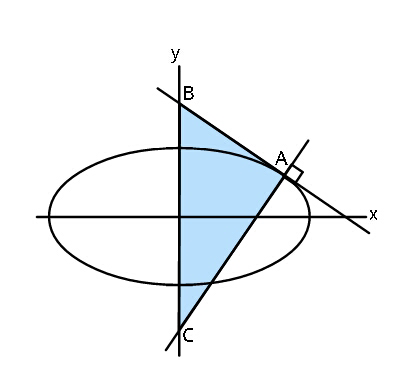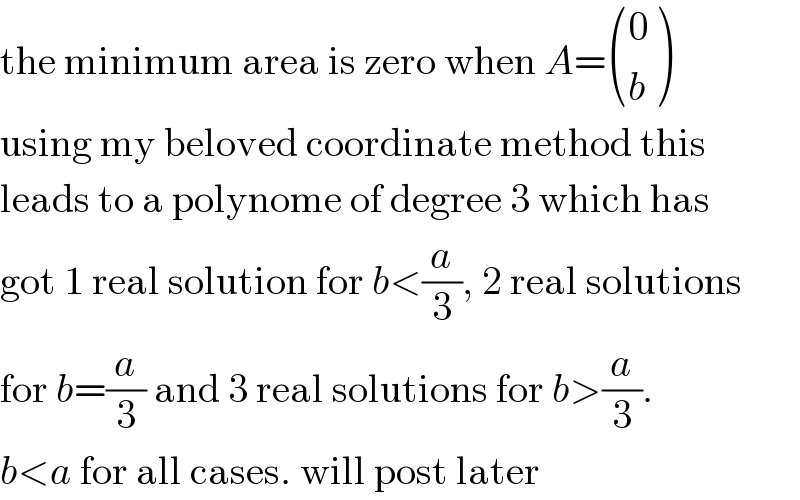
Question and Answers Forum
Question Number 48250 by ajfour last updated on 21/Nov/18

Commented by ajfour last updated on 21/Nov/18

Commented by MJS last updated on 21/Nov/18

Commented by ajfour last updated on 21/Nov/18

Answered by ajfour last updated on 21/Nov/18

Answered by MJS last updated on 21/Nov/18
![I corrected my method. no 3^(rd) degree polynome A= ((p),(((b/a)(√(a^2 −p^2 )))) ) B= ((0),(((ab)/(√(a^2 −p^2 )))) ) C= ((0),((−(((a^2 −b^2 )(√(a^2 −p^2 )))/(ab)))) ) ∣BC∣^2 =(((a^4 −p^2 (a^2 −b^2 ))^2 )/(a^2 b^2 (a^2 −p^2 ))) ∣AC∣^2 =((a^4 −p^2 (a^2 −b^2 ))/b^2 ) ∣AB∣^2 =((p^2 (a^4 −p^2 (a^2 −b^2 )))/(a^2 (a^2 −p^2 ))) Heron′s product gives ((2p(a^4 −p^2 (a^2 −b^2 )))/(ab(√(a^2 −p^2 )))) [and this is zero with p=0] its derivate is ((4(a^2 −b^2 )p^4 −6a^2 (a^2 −b^2 )p^2 +2a^6 )/(ab(√((a^2 −p^2 )^3 )))) zeros are (p>0) p_1 =(a/2)(√(3−((√(a^2 −9b^2 ))/(√(a^2 −b^2 ))))) p_2 =(a/2)(√(3+((√(a^2 −9b^2 ))/(√(a^2 −b^2 ))))) p_1 , p_2 are the local extremes with b<(a/3) with b=(a/3) ⇒ p_1 =p_2 and there′s just a horizontal tangent. with b>(a/3) the area is constantly rising with p towards a the area is zero at p=0 and +∞ at p=a](Q48287.png)
Commented by ajfour last updated on 21/Nov/18

